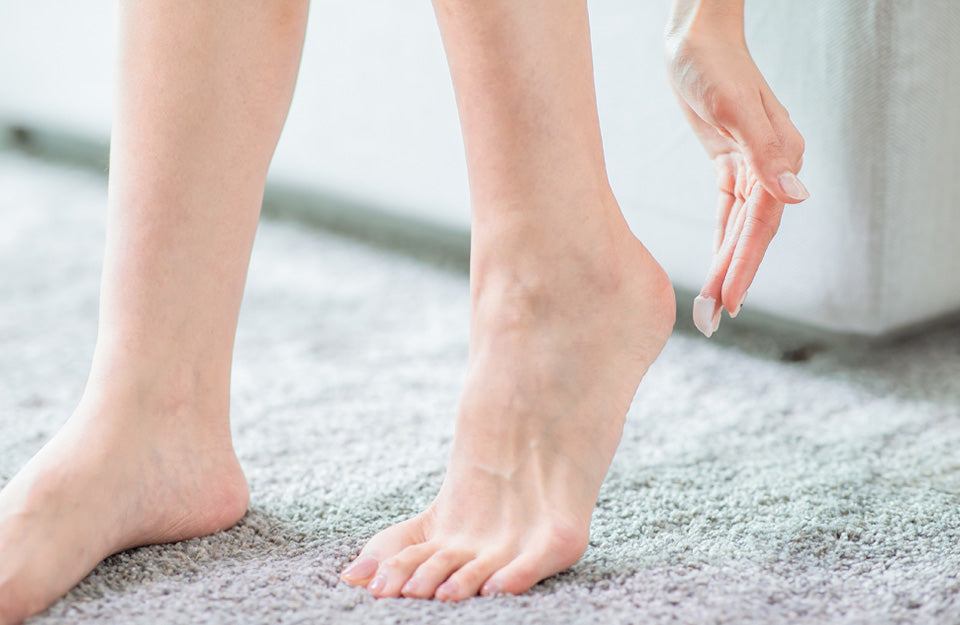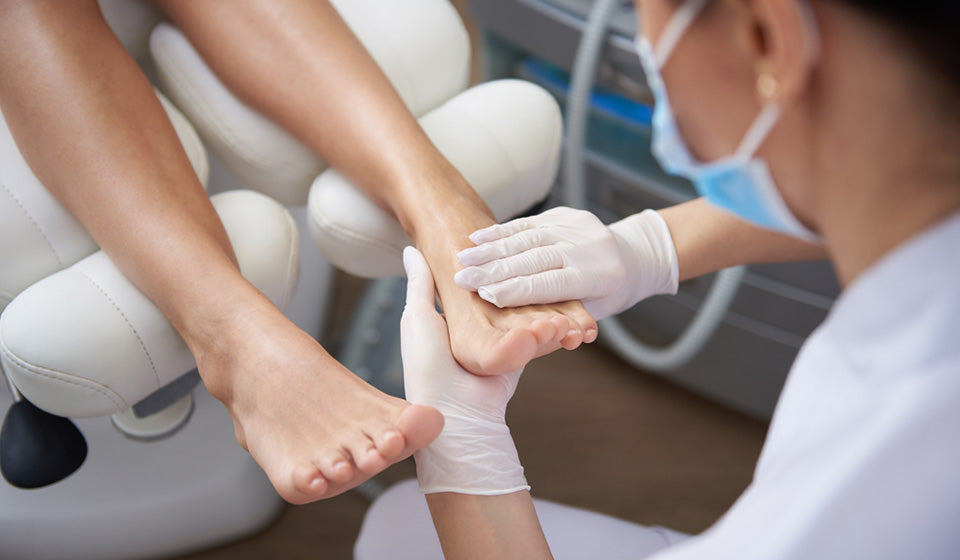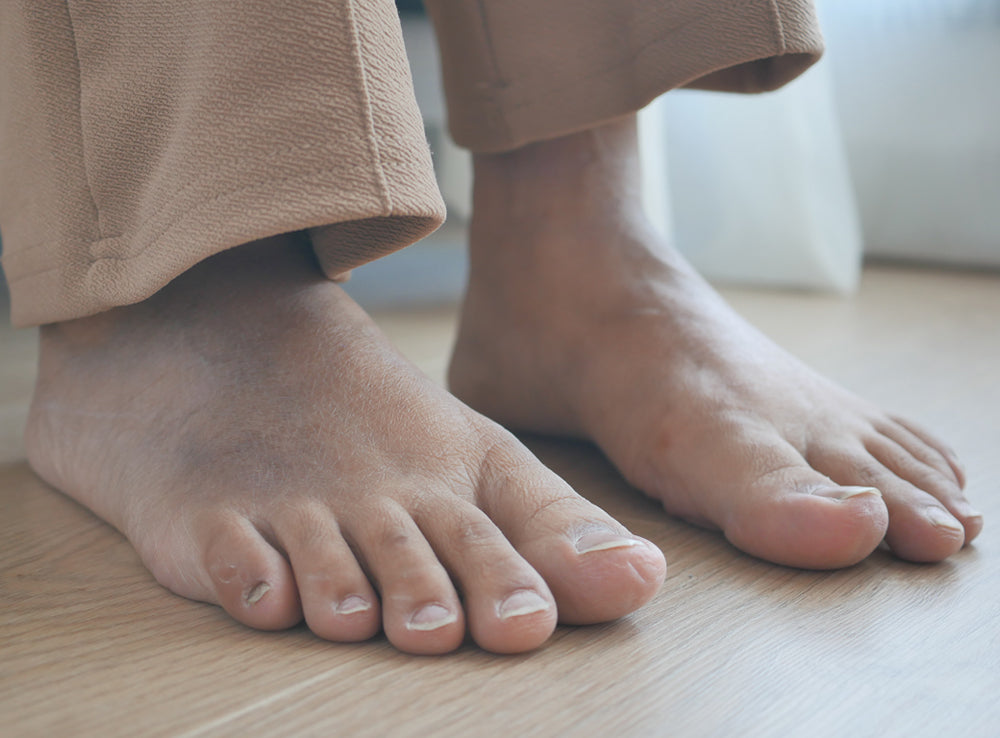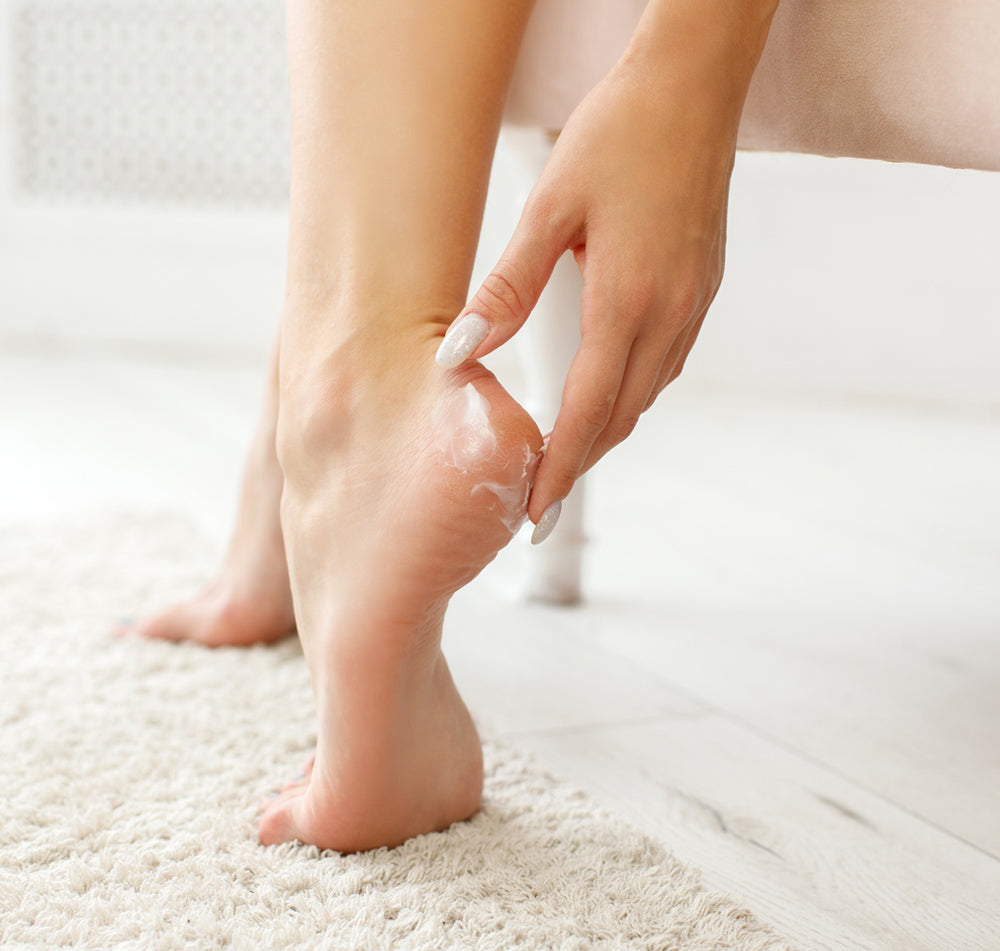
Diabetic Foot Care
If you have diabetes, caring for your feet is critical to avoid any long-term damage which could arise from having diabetes (either type 1 or type 2). This is because people who have diabetes are at increased risk of foot health complications arising from infections and injuries to the feet. If you have suffered from gestational diabetes in the past, you may be at greater risk of developing type 2 diabetes, so it is important to take extra care of your feet.
Diabetic foot care typically involves a daily foot check to make sure there are no changes or symptoms you hadn’t previously noticed. Some people who have diabetes lose some or all of the feeling in their feet, whether that is temporary or permanent. This means that it can be hard to notice when conditions that are usually painful, such as corn and calluses or blisters, occur, or stepping on a sharp object, such as a pin. For this reason, a visual inspection can be very helpful and may prevent serious complications from developing.
Loss of sensation in the feet also makes it very important to be extra vigilant when you check the size and fit of a new pair of shoes. Without the sensation of shoes pinching or crowding in on your feet, you might not realise straight away that the shoes are too small, which can lead to a variety of foot health conditions.
Diabetes can also cause the circulation in your feet to diminish, further adding to the risk of infection, wounds and other serious foot complications.

Common symptoms of diabetic foot problems
Never ignore a new foot problem. Any changes you notice in the usual condition of your feet could be significant, so you should report these changes to your diabetes care team, who can help you to find out if there is anything you should be doing differently. Below is a list of symptoms to watch out for:
- Reduced sensation in one or both feet and toes (neuropathy)
- Nerve pain (burning or stinging) or altered sensation (a heavy feeling or feeling excessively hot/cold) occurring in one or both legs, feet or toes (neuropathy)
- Foot ulcers (wounds) – seek emergency care immediately
- Excessively dry skin or hard skin (calluses)
- Red, hot and swollen foot – seek emergency care immediately
Should you experience any of these symptoms, it’s important to seek medical assistance and advice from your diabetic care team as soon as possible – or that same day for those symptoms where it is advised to seek emergency care.
If you need emergency care and your usual surgery or clinic is closed, contact the NHS 111 Out of Hours service instead. Explain your symptoms clearly and make sure they know that you have diabetes, as this affects the advice you will be given.

Good routines you should adopt for diabetic foot care:
Gain access to diabetic foot education material.
Attend regular diabetic foot screening from your registered podiatrist or GP surgery.
Organise regular nail care from a podiatrist. If you lack sensation in one or both of your feet, this can affect your ability to notice injuries caused by overgrown toenails or accidents with the nail clippers or scissors.
Look after your skin – apply a urea emollient every day to prevent dry skin (dry skin can increase your risk of developing infections).
Check your feet daily for any changes.
Wear supportive footwear that has adequate depth and width for your foot type. Advice can be given to you from your podiatrist or health care practitioner on what shoes would best suit you and your lifestyle.

How to perform a daily foot check
It is important to get into good routines early on, such as visually inspecting your feet every day. If you struggle to get down to your feet, you can use a mirror or ask a friend or relative to check for you. You can complete a thorough foot check by following these simple steps:
1. Skin: Check the condition of your skin and overall appearance of your foot. Take time to look at the tops and bottoms of both your feet, and in between your toes, for any signs of:
- Cuts or breaks in the skin
- Hard skin, such as corns or calluses
- Discolouration, such as bruising, blood blisters or red ‘hot spots’
- Excessively dry or cracked skin
- Maceration or athlete’s foot, playing close attention to in between the toes
- Swelling, heat or redness anywhere on the foot – seek urgent medical attention if you notice that your foot is red, hot or swollen.
2. Nails: Check your nails, for example:
- Check that your nails are not too long or excessively short
- Check for signs of ingrowing toenails – this may appear as inflammation or discharge around the outer corners of your nail, commonly at the big toenail
- Nail trauma, such as bruising, detachment or thickening of the nail
3. Footwear: Visually check and feel the inside of your footwear before wearing, for example:
- Check there is no debris or objects that should not be inside the shoe
- Check there are no heavy seams that run along the inside of the shoe – these can rub against your toes
- Check the sole of the shoe is not split, broken or excessively worn
